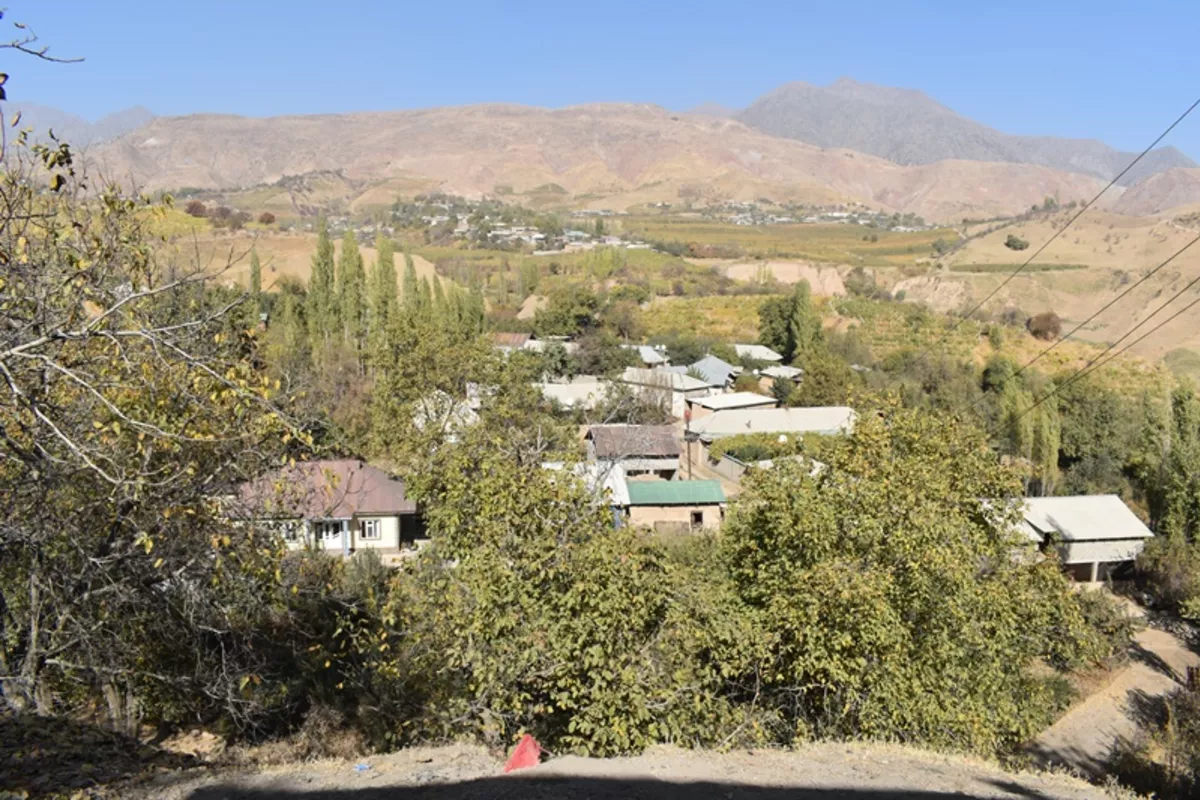
photo: Asia Plus
High in the rugged Almosi Gorge, where steep slopes meet sunlit vineyards, Tajikistan's village of Lolazor is undergoing a remarkable transformation.
Once known simply for its grape fields, it is now Tajikistan’s first rural community to fully embrace a digital and tourism-driven future - a place where ancient traditions and modern innovation blend seamlessly, The Caspian Post informs via Tajik media.
A New Identity: Tradition Meets Technology
Among 49 villages scattered across the valley, Lolazor stands apart. It has preserved its centuries-old grape-growing culture while adopting modern farming techniques and digital tools. Here, villagers aren’t just harvesting crops - they’re building a tech-savvy, sustainable future.
The scenery itself feels like a postcard: vineyards drape along the mountains like a glowing necklace, especially in autumn when they turn fiery red and gold. Children patch potholes with shovels, jokingly asking for a symbolic “haqqi roh” - a small toll - from passing drivers.
The Pink Grapes the Wind Created
“Look at these grapes,” says gardener and community activist Jamoliddin Kalonov, holding a cluster of shimmering Taifi berries. “Everywhere else Taifi is white or red. Only ours turn pink - the mountain wind does that.”
Lolazor’s 800 residents take great pride in their pink Taifi grape, the signature crop of the Almosi Valley. But climate change has started to soften the fruit, pushing farmers to diversify. Today they grow high-yield apples - Golden, Gala, Pink Lady, Granny Smith - grafted onto resilient local rootstocks.
FAO experts say these methods can boost harvests by 40% while cutting water use by up to 25% - crucial in this increasingly dry region.
Hisor Sheep: Strength On Four Legs
Beyond grapes, Lolazor is famous for the Hisor sheep, a Central Asian breed that can reach 150 kg with notable fat reserves. Once free-grazing, the sheep are now kept in shelters due to drought and shrinking pastures. Villagers see the breed as living cultural heritage.
The village also boasts apiaries, mushroom farms created after FAO trainings, and even experimental saffron fields - a rarity in mountain terrain, with purple flowers glowing against the dry hillsides.
Lolazor is no longer a single-crop village. It’s becoming a diversified, resilient rural economy.
Digital Lolazor: A Village That Went Online
Years of drought pushed locals to rethink how they farm. Supported by the UN’s Food and Agriculture Organization, villagers took part in over 20 trainings on drip irrigation, fruit drying, mushroom cultivation, and digital literacy.
The result: Digital Lolazor, an online community where residents exchange advice, showcase innovations, and promote village life. “Our village is like an open-air university now,” Jamoliddin says.
Locals film short tutorials, post harvest updates on Instagram, and share their successes with pride. Among the pioneers is community activist Ma'ruf Ashourov, who promotes the village internationally.
Life With Limited Water - and Unlimited Determination
Water scarcity remains Lolazor’s biggest challenge. Springs dry up by early summer, and the Khonaqo River flows far below. Farmers dig wells, install drip systems, and collect rainwater in tanks. Every drop counts.
Across Tajikistan, nearly 40% of agricultural land faces degradation, and droughts are shrinking crop yields. Yet Lolazor continues to push forward.
Building Their Future With Their Own Hands
Lolazor’s progress is driven from within. Residents built a new school and clinic, repaired local roads, and are raising money for a deep water well. These efforts strengthen not only infrastructure, but community confidence.
In 2025, more than 500 tourists visited from Tajikistan and abroad. With no hotels yet, families host travelers in their homes, offering local dishes and warm hospitality. FAO trainings have helped residents become skilled in agritourism and digital promotion.
Today, Lolazor is evolving into a living museum of grape culture, crafts, flavors, and village traditions.
Looking Ahead
Almost every resident here uses a smartphone, has completed training programs, and shares knowledge with neighbors. Living standards are rising, and new investors are showing interest.
A cooperation agreement was recently signed with Yuksalish village in Uzbekistan’s Fergana region, enabling academic exchanges and joint research with local universities.
Challenges remain - unstable electricity, rough roads, limited facilities, staff shortages. But if these are addressed, Lolazor could become a national model of rural revival in 21st-century Tajikistan.
Share on social media